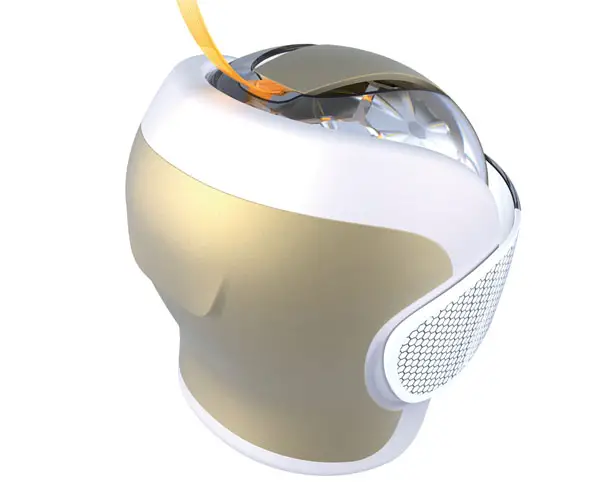Magnetic Resonance Helmet utilizes 500 individual MRI sensors that work as a phased array to provide details levels of imaging in spatial and temporal terms. Our conventional method of observing brain is to use fMRI, it’s non-invasive however it has demonstrated a lack of spatial resolution and temporal resolution. That’s why patients have been subjected to very long scanning times, this issue leads to discomfort to the patients due to claustrophobia, high noise levels and the need to keep still during a scan. This concept helmet tries to address those issues.
Using Magnetic Resonance Helmet, doctors can obtain information in drastically reduced time yet very detail. Patients are presented with multimedia services during the scan thus help them to feel relax and comfortable which will improve the quality of the scan. The multimedia services are also available for special neuronal tests, linking the stimulus of visual tract with brain response. The soft design of this helmet as well as integrated headphones help patient to reach the next level of trust and comfort. This project was one of Red-Dot design concept finalists.
Designers : Sebastian Rieger, Dr. Stefan Schonhardt, Dr. Andreas Peter and Hans Georg Kloster











I wish there was a date on this. I have a masters in criminal justice, a B.S. in psychology. after reading of portable low tesla MRI and reflecting on the radar on a chip concept ( a reality even some in the spec ops world are gleefully aware of! as relayed in personal conversation.) … After this I was thinking for the C.J. class that it would be a usefull device to have, to folllow subjects out and about in the "real world" and look for certain patterns, perhaps this way behavioral precursors could be identified in an actionable way or at least in an investigative way to apply in treatments and interventions. So when did the doctors develop this? is it on the market in a real devise, or setting on a shelf, yet to be realized?
Hi Walt, it's only concept.